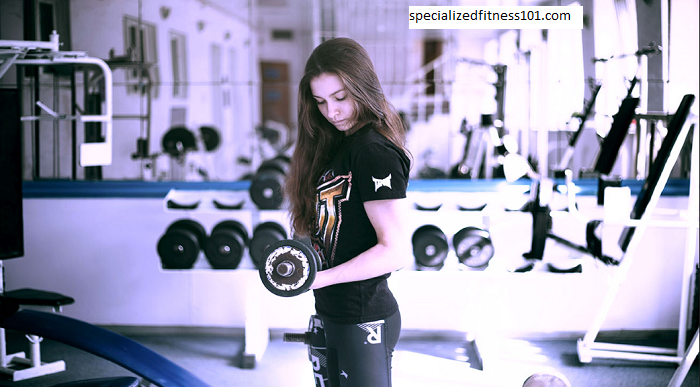Are More Women Joining the Health and Fitness Industry?
The health and fitness industry has experienced dramatic transformations over the last two decades. These changes not only affect how individuals approach their physical well-being but are changing the configuration of the industry. Traditionally, males have occupied trainers, coaches, gym owners, and athletes in this sector, but increasingly, women occupy each one of these occupations. From fitness instructors to entrepreneurs, women are increasingly asserting themselves in an industry that has historically sidelined their contributions. But what’s driving this change, and how is it reshaping the future of health and fitness?

The Rise of Women in Health and Fitness:
For so long, the health and fitness industry, particularly within Western contexts, has been almost inevitably identified with masculinity through male-dominated sports and bodybuilding cultures. As long as men continue to be the most visible creators and consumers of weight training and bodybuilding or athletic preparations for sport, there inevitably is a representation imbalance in the media, fitness content being created by, for, and from masculine conceptions of fitness in their central aim to build muscles or optimize performance.
This industry landscape is changing. A trend has been seen where more and more women have been entering the field and excelling over the past few decades, becoming fitness trainers, coaches, athletes, nutritionists, and entrepreneurs. According to a report by the International Health, Racquet & Sportsclub Association (IHRSA), women make up a significant share of gym members worldwide, and participation among women in fitness classes, yoga, Pilates, and other wellness activities surpassed that of men.
Drivers of Female Participation:
Fitness industry:
Several are the key factors driving more women into the health and fitness industry, both as professionals and participants.
1. Empowerment Through Fitness
Fitness, for many women, has become a source of empowerment. Whereas in the past, lifting weights or participating in strenuous exercise was always discouraged and made to look like something that only men could do, these new norms of fitness create strength and independence for all genders. A definition of “fit” women is no longer about old, sickly, non-fat ideals but encompasses a whole approach to health including strength, functional movement, emotional wellness, and overall physical wellness rather than just physical attractiveness.
This change has been highly influenced by social media applications like Instagram, YouTube, and TikTok. Women trainers and fitness influencers have started using these platforms to spread body positivity, strength training, and diverse wellness approaches. These women are being seen and, thus breaking the stereotypes, which in turn encourage more women to go into health and fitness.
2. Fitness Programs Focused on Women Are on the Rise
Fitness industry:
The fitness industry is also becoming more female-friendly. For example, one can now find ever more pregnancy-friendly workouts, postpartum recovery routines, building lean muscle or increased flexibility, or simply bone density. Studios and gyms already offer women-only classes as well as yoga and barre and spin sessions specifically geared toward females.
Among them is Sweat, by fitness influencer Kayla Itsines. This wave of women-centric fitness brands focuses on community, mental wellness, and sustainable fitness and appeals to a growing base of women seeking alternatives to the intimidating or inaccessible gym cultures.
3. Female Fitness Entrepreneurs Influence
Fitness industry:
One of the most important developments in the fitness space is the upswing of female entrepreneurs entering the game. Whether it is opening gyms or developing products, women are stepping up to create businesses that are specifically tailored for their needs as consumers. Proof of this entrepreneurial spirit is seen in the boom of women-led fitness brands, clothing lines, and online coaching platforms.
Many women have their expertise in training or health coaching and build a brand around it, including online programs and fitness challenges. For example, companies like Tone It Up, founded by Katrina Scott and Karena Dawn, basically have proven to be successful at creating an active online community particularly for women, focusing on positive energy, loving oneself, and empowerment.

More so, women lead the way in technology aspects associated with fitness. They have designed fitness trackers and health applications, not just merely tracking fitness but one’s whole well-being by monitoring the menstrual cycle, nutrition, and even mental well-being.
4. Breaking the Barrier for Access:
Fitness industry:
One major impediment for women into fitness is that they must somehow fit into a model-to appear and look in, but also be an authority. The image of a female who was working out earlier has been moulded to fit into a certain appearance: either extremely muscular and fit in the purer bodybuilding form or whatever mould was adopted at a given time. This attitude still exists, although slowly attention is shifting to more acceptance and different body forms.
Women now see a much more diverse range of body shapes, sizes, and fitness levels represented in fitness media. Many women in the fitness industry are advocates for body positivity and inclusion, actively challenging the notion that there is one “right” way to look or move. A more general definition of fitness and well-being gives females of different shapes and sizes the power to penetrate the sphere of a fitness professional, be it becoming a trainer or nutritionist or a successful wellness advocate.
Women are also being given better access to educational and professional development opportunities in the fitness industry. Where strength training, yoga, Pilates, and group fitness certification opportunities are greater, these have furthered the horizon for elevating standards of professionalism within the industry and give women tools to succeed in competitive yet often male-dominated spaces.
5. Community and Support
Fitness industry:
Women-to-women fitness communities are very motivating for women to engage more within the industry. Fitness is now about much more than individual achievement; it’s more about connection, support, and social interaction. Many women are being attracted to fitness communities offering holistic wellness, personal growth, and mutual support. Women can share their fitness journey, challenge, and success stories with other people through online communities like the Facebook groups, forums for fitness, and membership platforms.
Especially in those situations when many previous options may have left women excluded because of competitive or “bro culture” many traditional gyms or spaces, this sense of belonging and camaraderie is imperative. Women-only fitness groups, retreats, and wellness events are booming in popularity and providing women the opportunity to form relationships, share experiences, and help one another with health and fitness goals.

The Future of Women in Health and Fitness:
Fitness industry:
The health and fitness industry is, and will be, further changed in ways so profound as the more women continue to join it. With more female trainers, coaches, and wellness entrepreneurs in the demand, practices are expected to be more inclusive, more accessible, and much more representative of fitness.
The wave of women in the fitness world is also forcing the increased mainstreaming of female athletes, especially in sports that were previously single-sex male sports, such as weightlifting, CrossFit, and bodybuilding. Female athletes are pushing limits beyond physical boundaries but are also using their icons to serve demands for gender equality, equal pay, and more and proper representation in the media.
Also, with mental health and general wellbeing continuing to gain priority as part of what is meant by fitness, it is a growing focus area that is not expected to be anything less than trending for a while longer. Since many women lead these movements, there will continue to be an adoption in the industry for a healthier balance in this direction.

